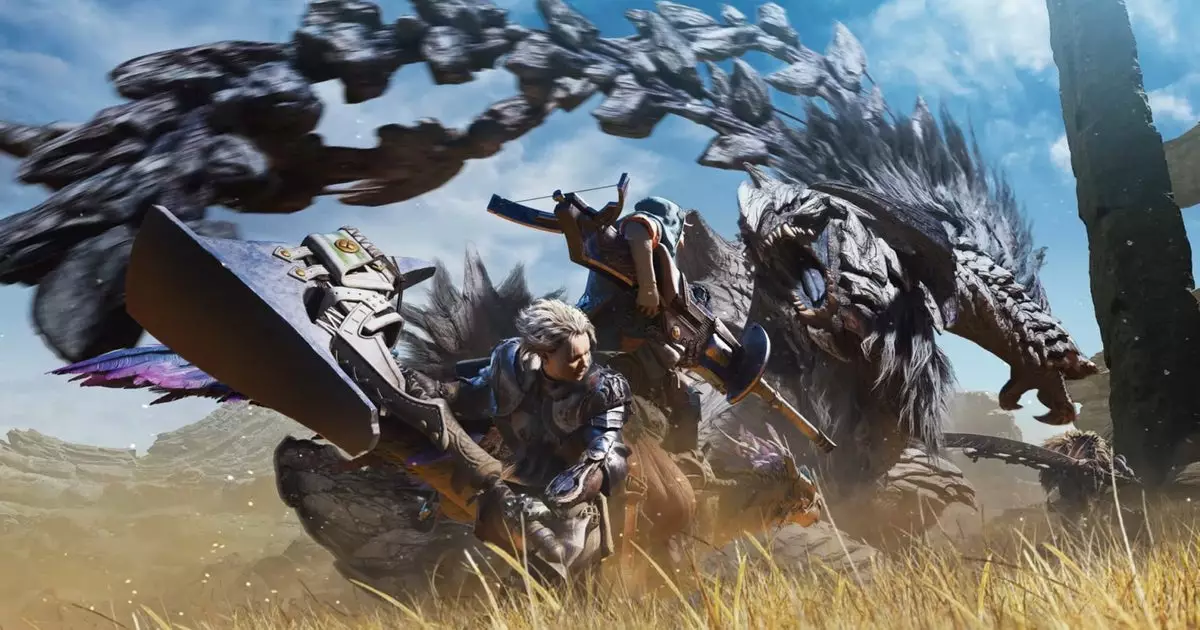The Monster Hunter series has captivated players for over a decade, luring them into a vast world where mythological creatures roam and hunting becomes an art form. As we dive into the latest addition, Monster Hunter Wilds, it becomes clear that while new monsters and environmental elements enrich the experience, the approach to weaponry remains steeped in traditional design choices.
A Stalwart Tradition: The Art of Retrofitting Existing Weapons
In Monster Hunter Wilds, Capcom has opted for an evolutionary rather than revolutionary approach regarding weapon types. Director Yuya Tokuda suggests that rather than introducing a host of new weapons to play with, the development team’s focus has shifted towards enhancing the existing arsenal. This decision appears grounded in a commitment to balance and depth over sheer novelty. While new tinctures of beasts such as wyverns, toad monsters, and arachnids have been added to the game’s ecosystem, the foundational elements—the weapons—remain predicated on a framework that fans have come to recognize.
Drawing from past titles, many weapons echo long-standing designs such as those found in Monster Hunter Freedom 2 on the PSP. Despite the aesthetic upgrades and expanded movesets that come with the new entry, players might find themselves feeling a sense of familiarity, if not redundancy. This calls into question whether a deeper exploration of weapon diversity might have enriched gameplay rather than simply fine-tuning existing choices.
Tokuda’s comments reflect a thoughtful consideration of the challenges faced in adding an entirely new weapon type. The dilemma lies not only in coming up with unique gameplay mechanics but also in ensuring these innovations don’t overshadow existing weapon dynamics. Balancing the arsenal is complex, with each weapon designed to serve a distinct purpose in the hunt. A 15th addition would require careful evaluation to ensure that it complements the existing lineup while still maintaining its individuality.
The focus on balance also speaks to the nature of Monster Hunter’s gameplay. Each weapon is not merely an instrument of destruction but a tool requiring mastery, strategizing, and adaptability. Thus, tinkering with the existing system may yield a more satisfying and nuanced experience than simply introducing new options that could create discrepancies in effectiveness or popularity.
The transition from Monster Hunter: World’s Iceborne expansion to Wilds presents its own set of considerations. Iceborne challenged players to master their chosen weapon types to delves into advanced mechanics, prompting players to refine their skills. This is a key element for any MMORPG-like experience. However, as the franchise continues to evolve, there’s scope for integrating lessons gleaned from Iceborne while still ensuring that new players feel equally welcomed and engaged.
What players seem to crave is not just new weaponry but rather innovative gameplay that can reframe their hunting experience. In this way, the issue isn’t strictly the presence of new weapons but the evolving relationship between the existing ones and new gameplay mechanics. Would merging advanced techniques seen in Iceborne with familiar weapon types create a more robust experience?
One of the most enchanting aspects of the Monster Hunter series lies in its rich lore and imaginative monster designs. Crafting weapons from these creatures adds an additional layer of authenticity and delight to the gameplay. Tokuda hints at the potential for creativity with weapon creation through the lens of monster design.
Envisioning weapon types inspired by whimsical or bizarre creatures—like a wyvern composed entirely of balloons or a triangular insect monster—invites a level of experimentation that transcends conventional design. Such creativity could lead to weaponry that showcases lineage and characteristics unique to their monstrous progenitors, offering players a deeper connection to their tools of destruction.
As Monster Hunter Wilds moves forward, the series stands at a pivotal juncture between preserving traditional elements and embracing innovative concepts. By deeply considering how to evolve their weapon lineup within familiar frameworks, Capcom can refine combat experiences while still respecting the legacy of their game. Ultimately, the greatest potential lies in intertwining the imaginative aspects of monster design with thoughtful gameplay, ensuring that Monster Hunter remains an exhilarating, ever-evolving hunting experience.


Leave a Reply
You must be logged in to post a comment.